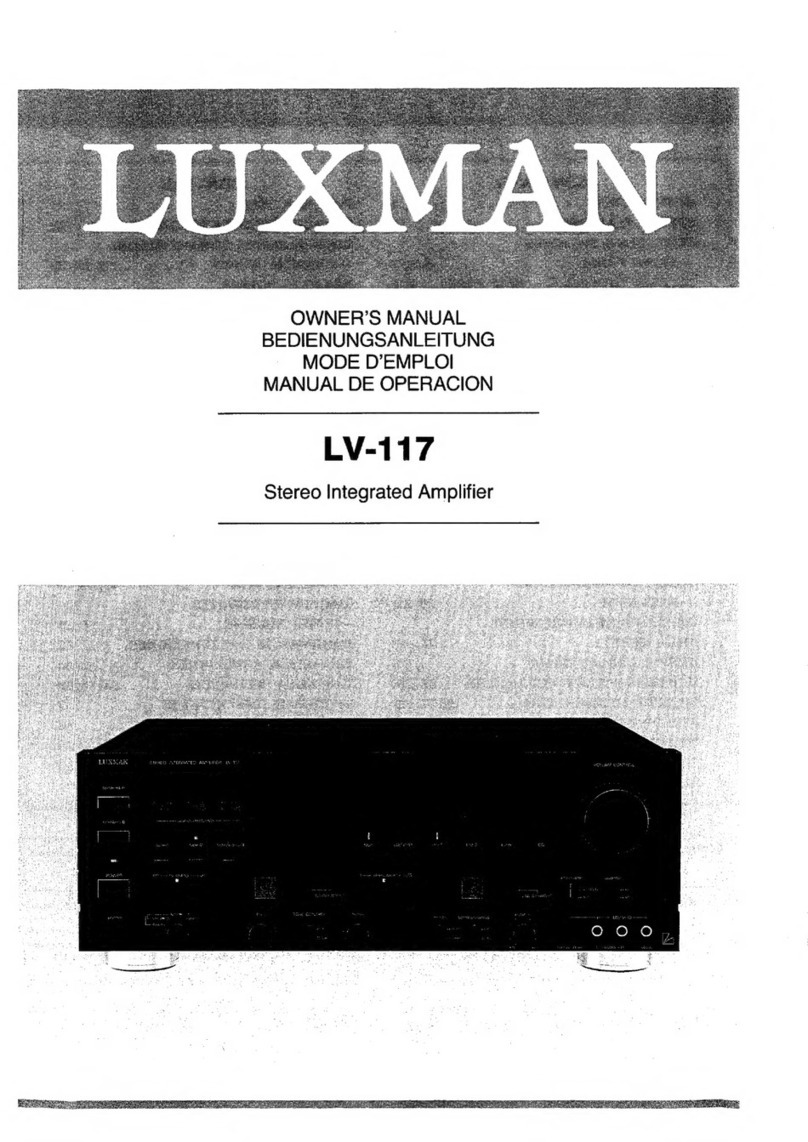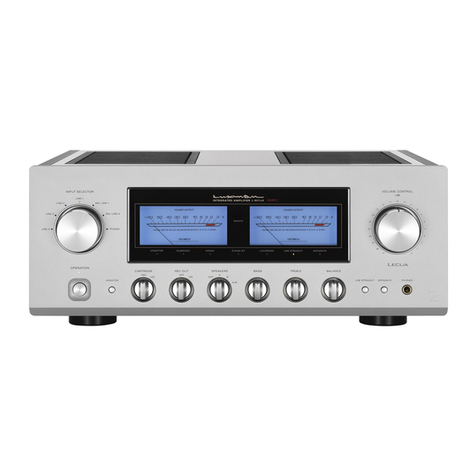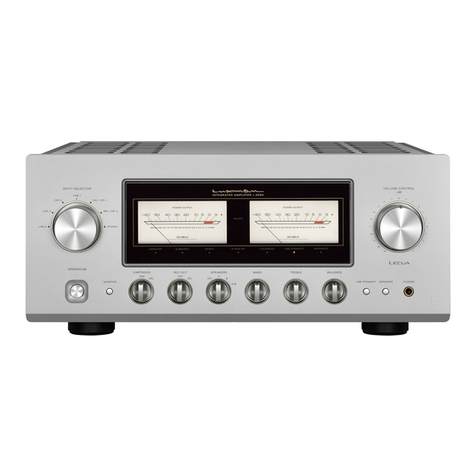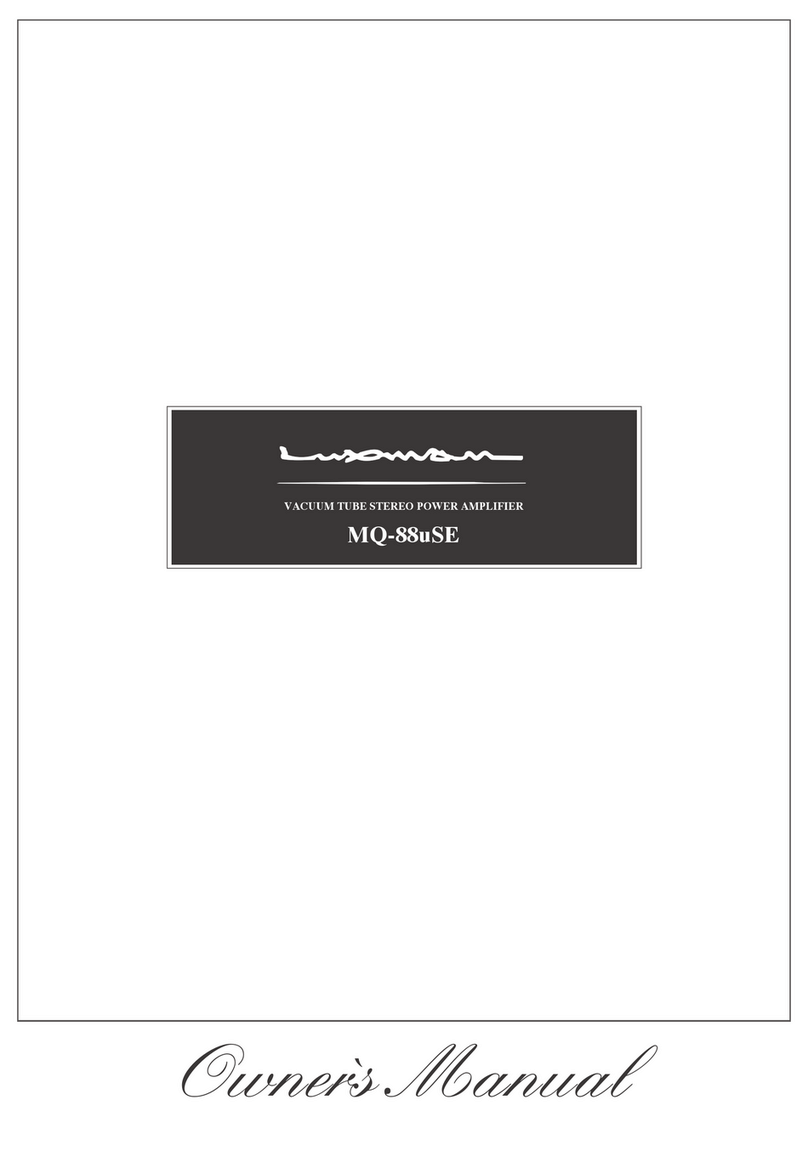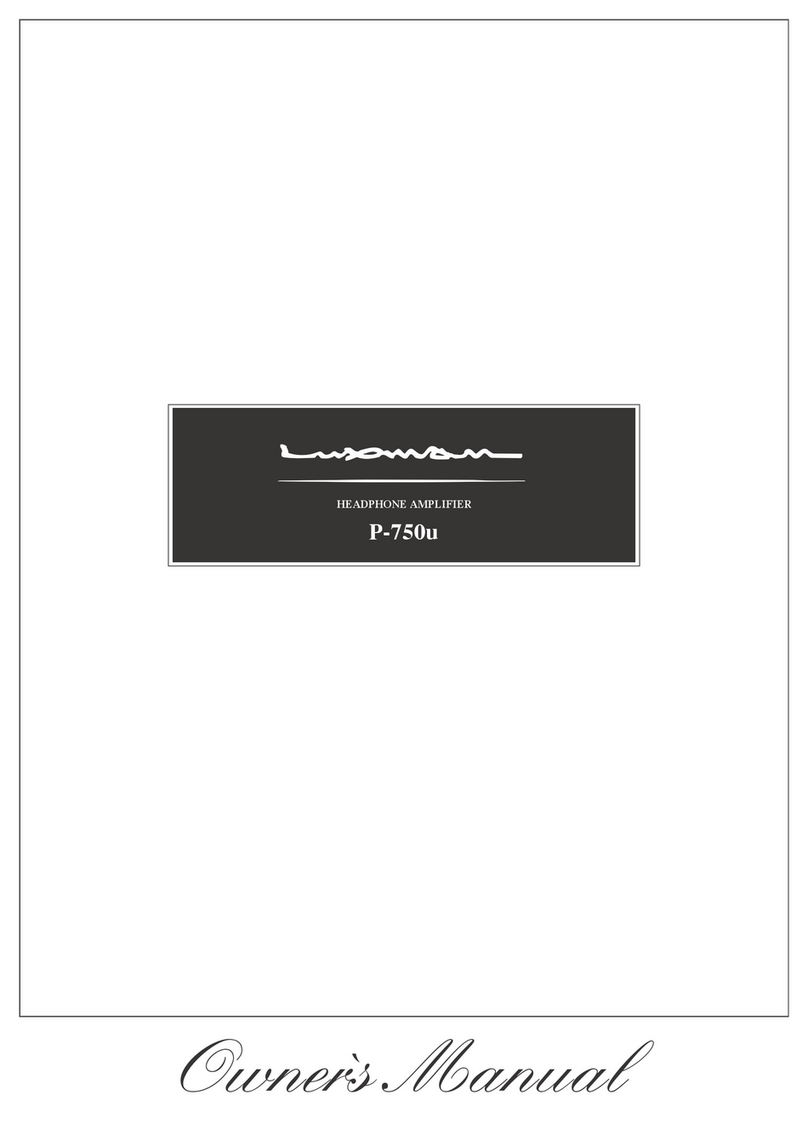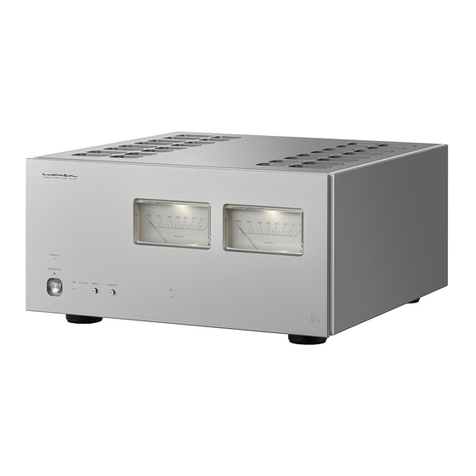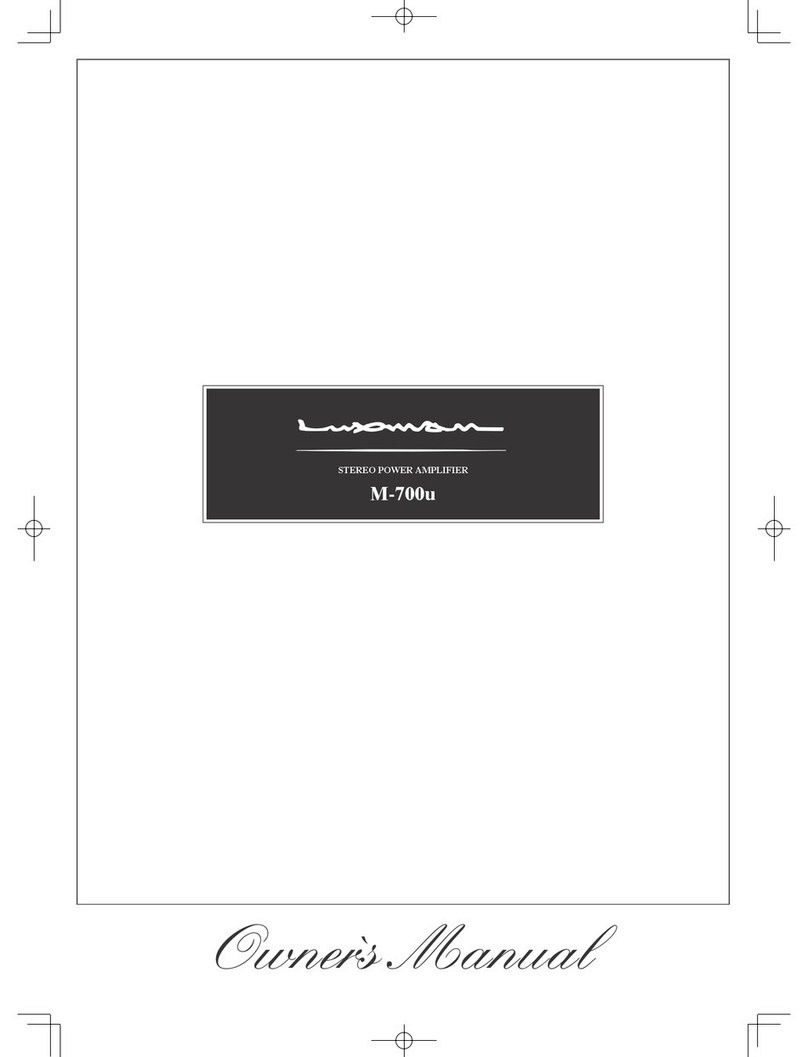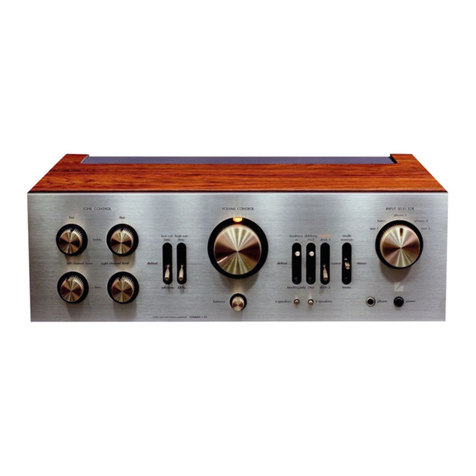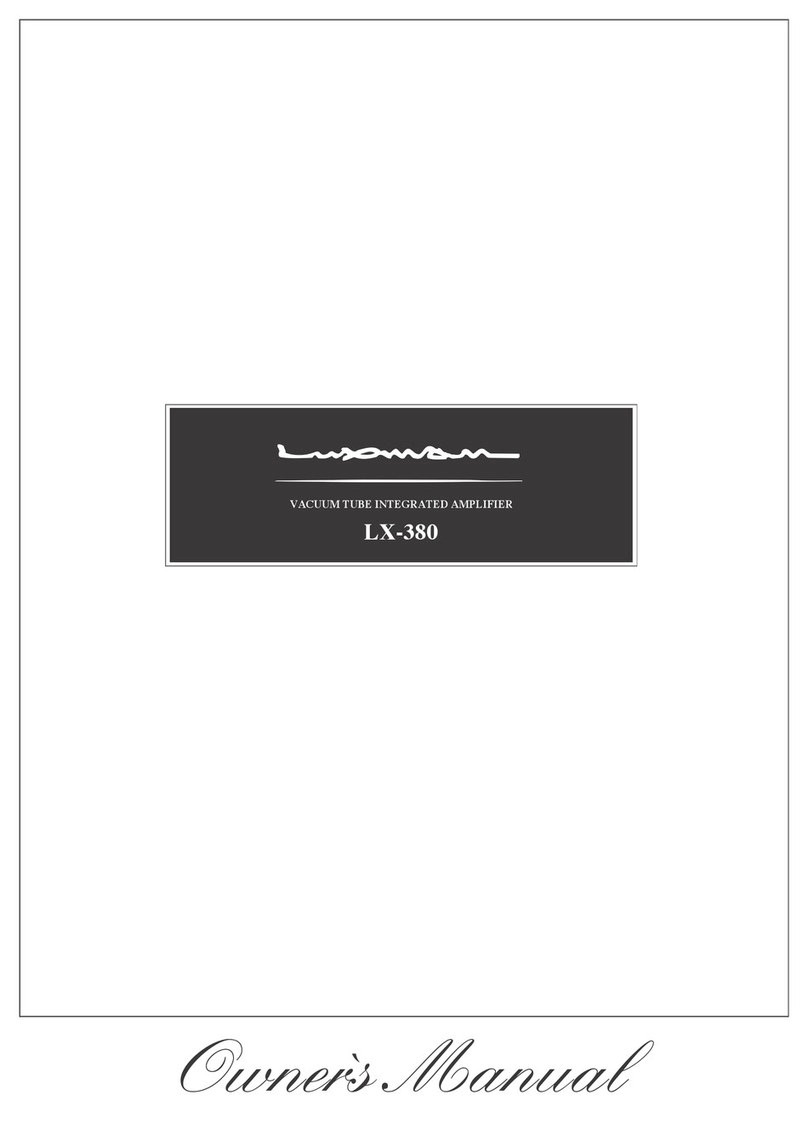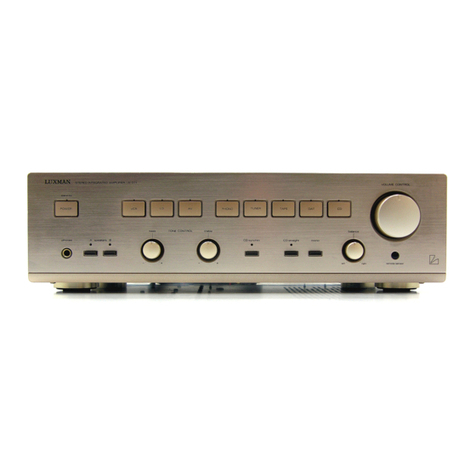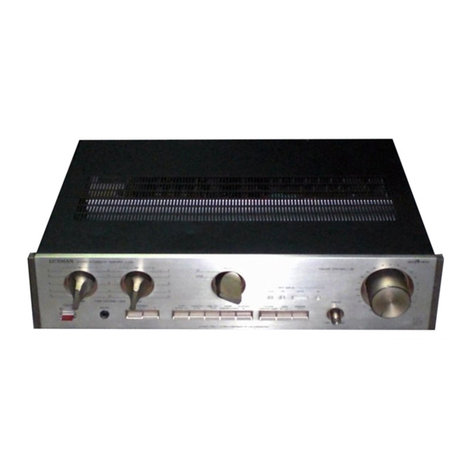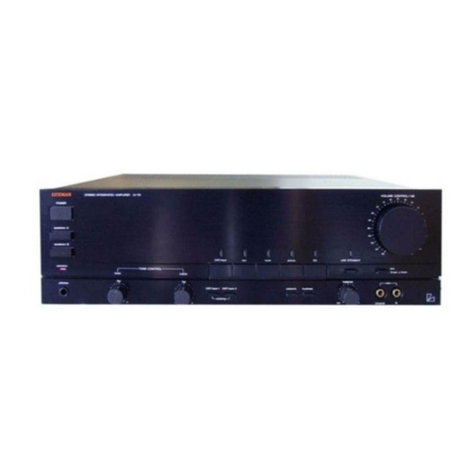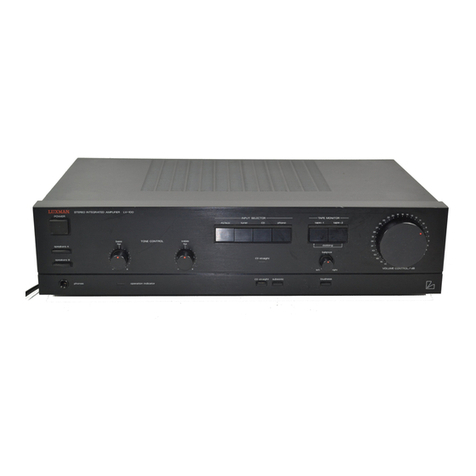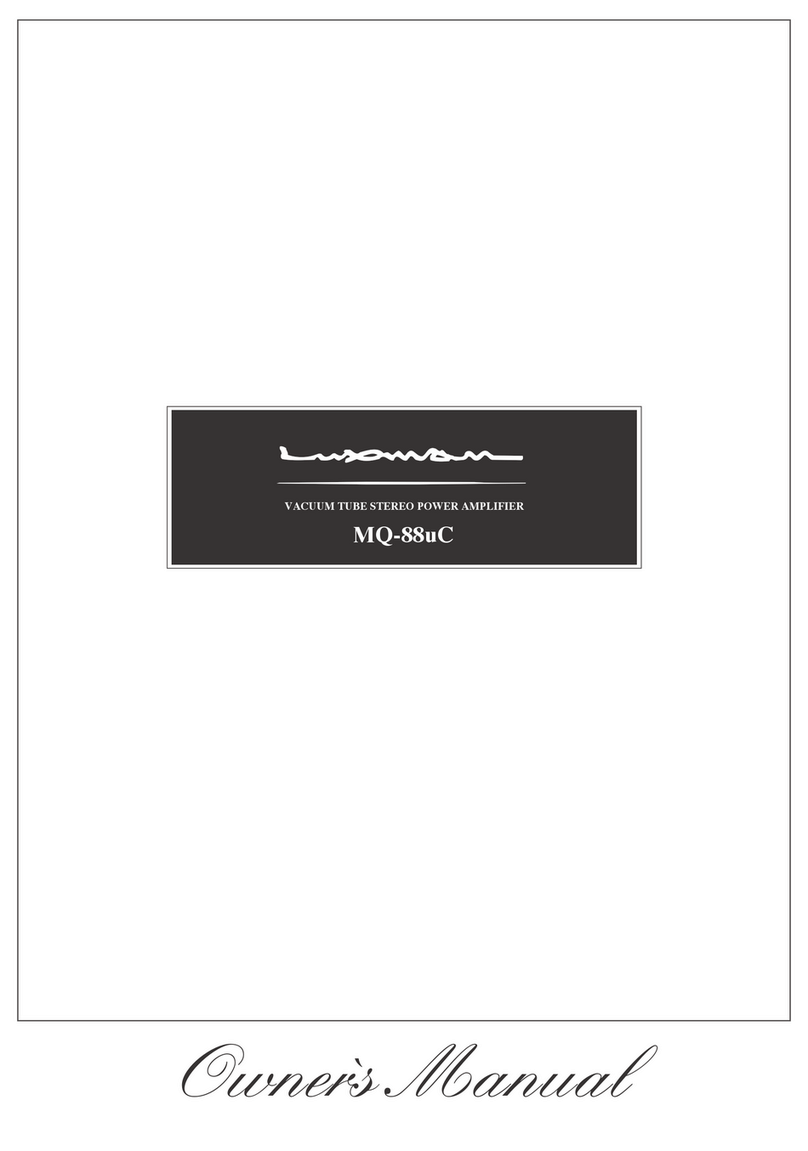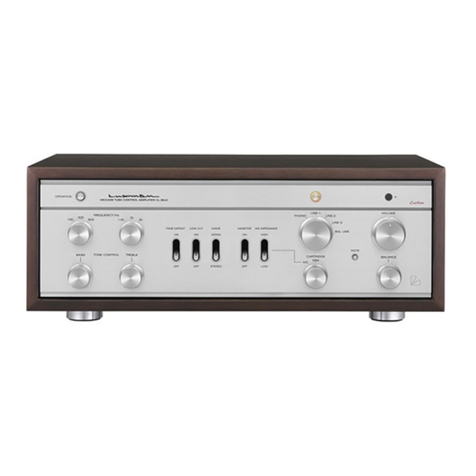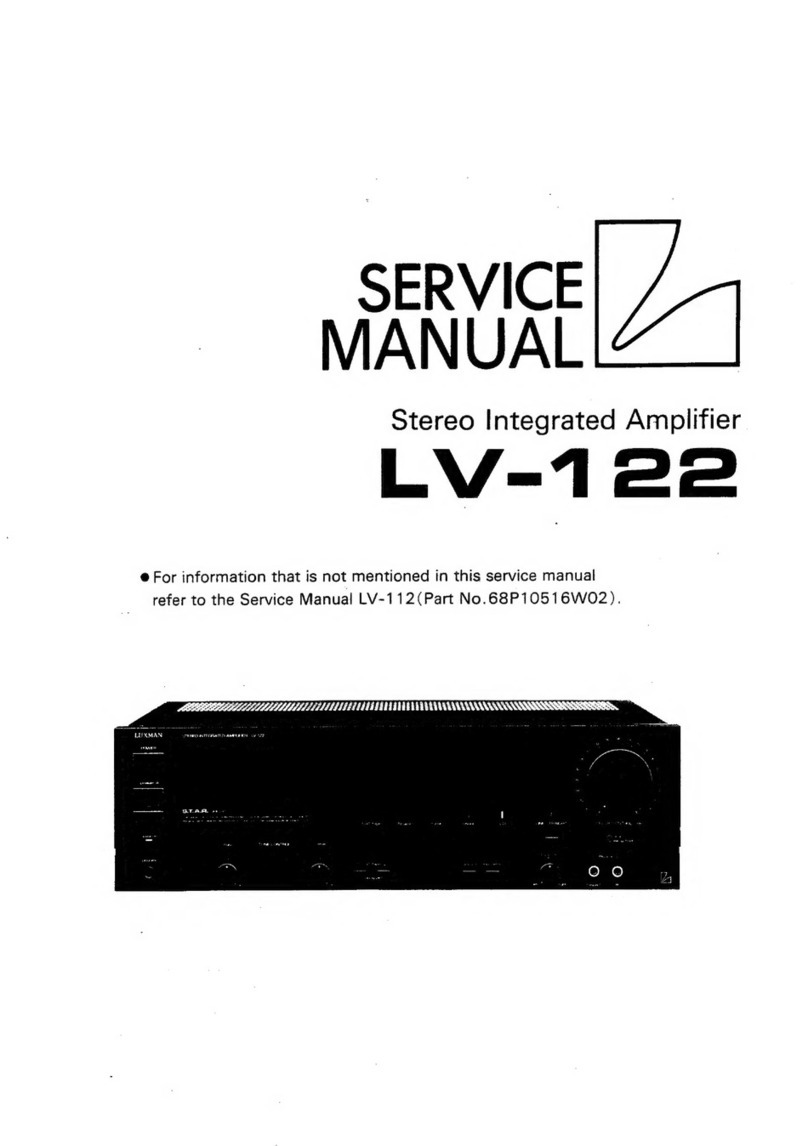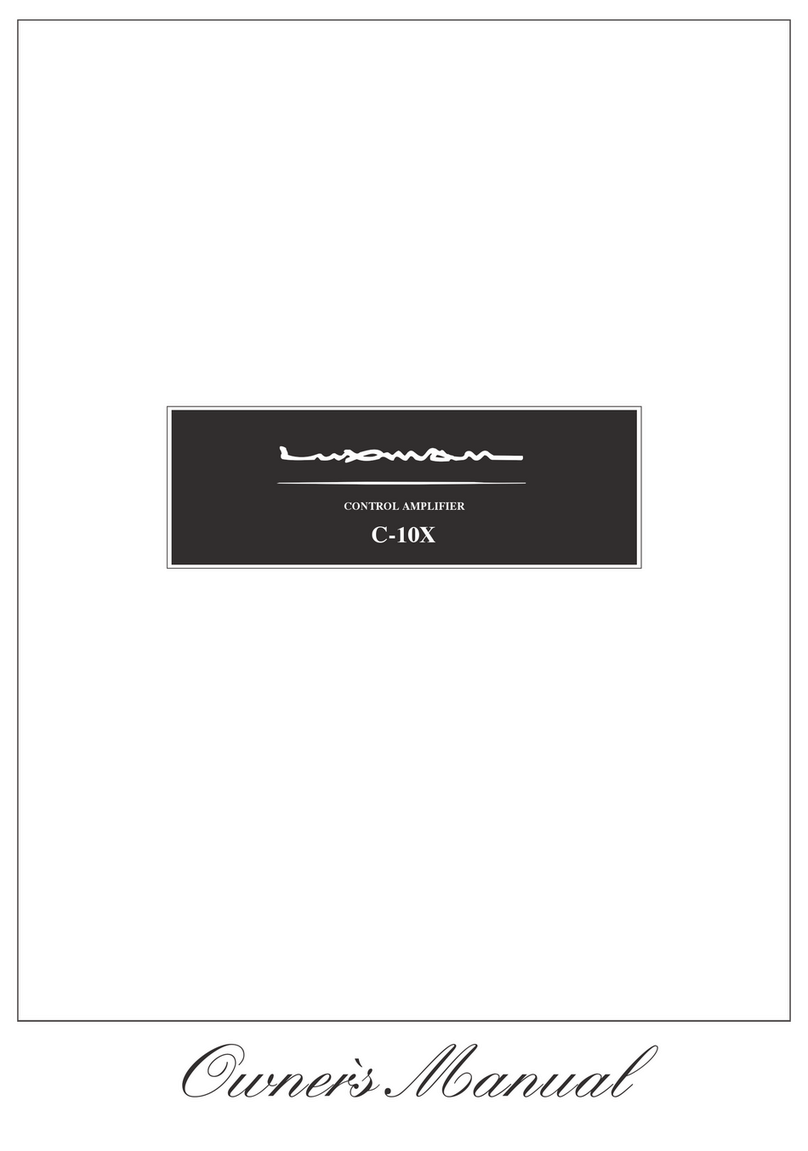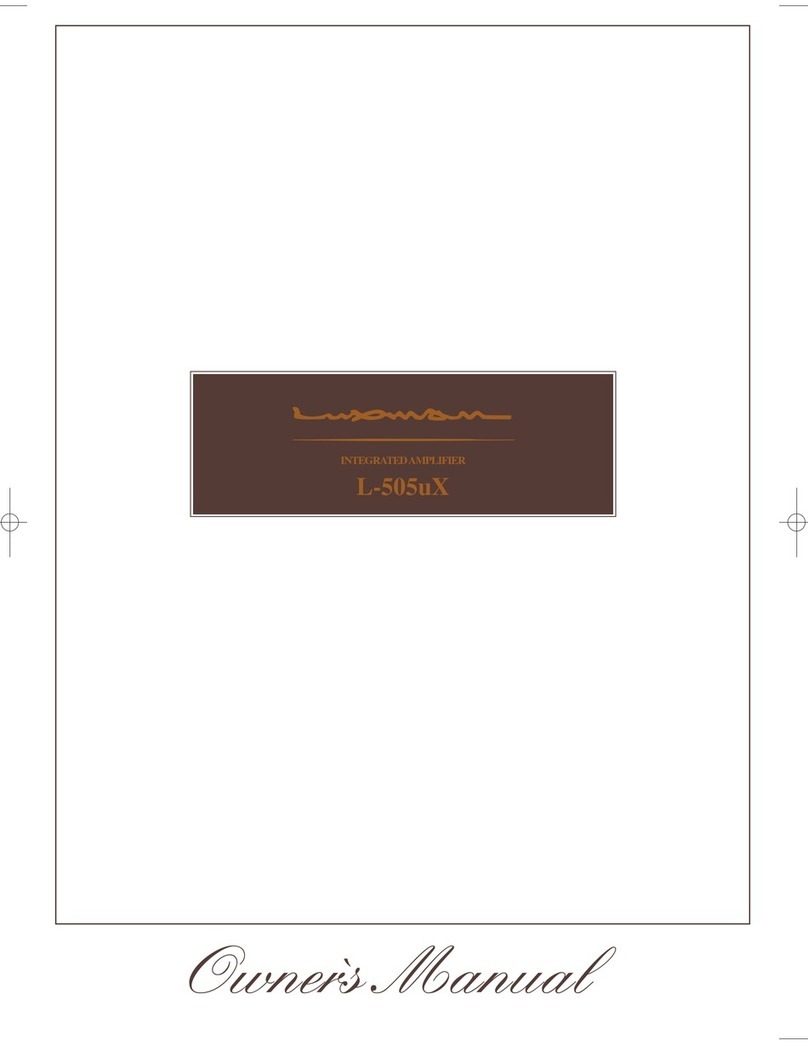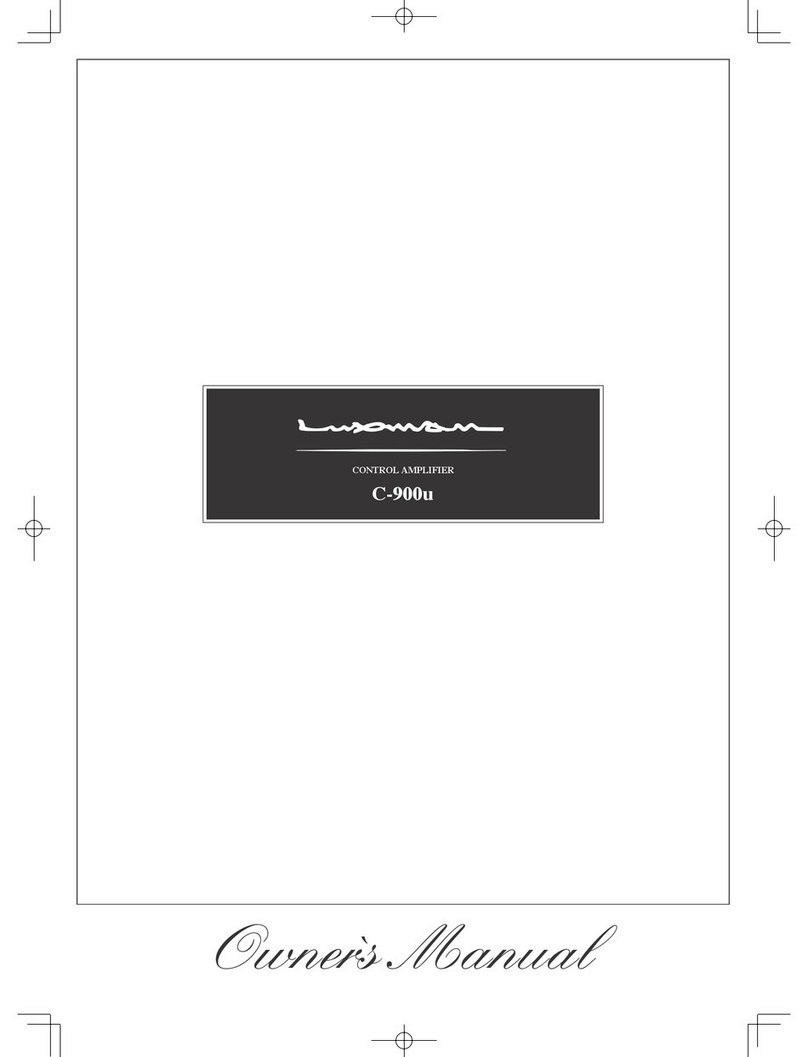
1
INTEGRATED AMPLIFIER L-595ASE
Precautions
Installation place
This unit should be installed in a well-ventilated location to
enable heat dissipation because it is an A-class amplifier and
generates considerable heat.
Especially, installation of this unit where direct sunlight is
present, where the temperature rises excessively high such
as close to a heater, or where it is humid or dusty may cause
malfunctions even if the heat is efficiently released. Therefore,
do not install this unit in such places.
Ventilation
The ventilation holes on the top and bottom panels of this
product should never be blocked. If the amplifier is installed in
closed rack or similar location, ensure ample space for cool-
ing and leave the door open. Never place anything on top of
the amplifier. Failure to observe these may cause malfunc-
tions.
Note:
Ensure heat dispersal. Do not install this equipment in a con-
fined space such as a book case or similar unit.
* Note
Wall
* *
*
Precautions when connecting to other
components
When connecting this unit to other input devices, such as a
CD player, SACD player, D/A converter, tuner or recorder, be
sure to turn off the power to this unit and all other connected
devices first. Failure to observe this may generate a danger-
ous noise shock resulting in speaker damage and may cause
malfunctions.
The connectors to each input terminal of this unit must be
pushed in firmly. If the grounding terminal is inadequately
connected, noise or hum, may be generated, resulting in an
adverse S/N ratio.
Cautions when connecting speakers
When connecting to a speaker system, exercise extra care
not to short-circuit between the positive and negative con-
nections of the speaker terminals and the speaker input ter-
minals of this unit. If a large signal is applied to the ampli-
fier while it is short-circuited, a large current may be passed
through the output circuit and cause malfunctions.
Sound is not generated shortly after the
power supply is turned on.
This amplifier is equipped with a timed muting circuit to pro-
tect the output. Therefore, no sound will be generated for a
short time after the power supply is turned on.
If the volume control is set to a high volume level before the
timed muting circuit disengages, a loud, dangerous volume
will be suddenly generated. Set the volume control to a low
level first and then adjust it after you hear the output from the
speakers.
Protection circuit
This product is equipped with a protection circuit that is acti-
vated upon detecting overcurrent, abnormally high tempera-
tures and DC drifts to protect the amplifier and speakers.
When the protection circuit is activated, the output to the
speaker terminals will be shut off and the operation indica-
tor will blink orange to show that this unit is muted. If the
protection circuit is frequently activated, disconnect the AC
plug from the wall outlet, wait for a while and then reconnect
the plug to the wall outlet again and turn on the power. If the
problem persists, please consult your dealer.
Repair and adjustment
When repairs or adjustments are needed, please consult the
dealer who sold you the unit.
Cleaning
For cleaning, use a piece of soft fabric such as a cleaning
cloth to wipe the unit. If dirt is hard to remove, use a small
amount of neutral detergent to wipe it off and then wipe the
unit with dry cloth. Do not use a solvent like benzine or thinner
because they could damage the exterior.
Batteries
Warning: Batteries used for the remote control shall not be
exposed to excessive heat such as sunshine, fire or the like.
Safety caution
Caution
This unit is heavy. Be careful when unpacking, carrying, and
installing it.
Take care if you try to perform all the installation work yourself
to avoid injury.
